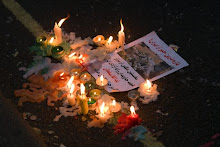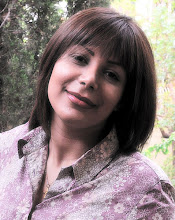
Introduction
Writing one’s own art history is always going to be risky; it’s subject to human memory, which is notoriously unreliable. Fortunately, I am a diary writer and an avid collector of exhibition catalogues so there is at least some documentary evidence for the claims I might make. The following is an account of the artists, exhibitions and movements which have had a significant effect on my work and on the way I think about ceramics.
Marc Chagall
An exhibition of paintings (1967-77) by Marc Chagall, at Palazzo Pitti in Florence in 1978 was the first to make a real, memorable impact on me. I went to see it time and again over the course of a month that summer. They looked beautiful and made sense to me, more so, if I was honest, than much of the rather grandiose religious art that I was supposed to be studying at the time. They seemed to be telling a story, though what that story was, was wholly obscure to me at the time.
An exhibition of paintings (1967-77) by Marc Chagall, at Palazzo Pitti in Florence in 1978 was the first to make a real, memorable impact on me. I went to see it time and again over the course of a month that summer. They looked beautiful and made sense to me, more so, if I was honest, than much of the rather grandiose religious art that I was supposed to be studying at the time. They seemed to be telling a story, though what that story was, was wholly obscure to me at the time.
Later, studying ‘fine art,’ which at that time was painting,
drawing and print-making, at Camberwell School of Art and Craft, (1981-85), my
depraved and superficial taste for such ‘illustrational, decorative’ works as
these was dismissed as woefully unserious and uneducated. I was introduced to
Bonnard and got a season ticket to an exhibition of paintings by Pisarro,
apparently these were the acceptable face of figurative art which Chagall,
curiously, wasn’t. I was painting landscapes at this time, but I was a village
girl and now lived in London and hadn’t learnt to love the London landscape
yet. I was getting interested in its people though and, in particular, their
stories which were so different from mine but with so many meeting points.
Kathe Kollwitz
An exhibition of graphic works by Kathe Kollwitz at Kettles
Yard, in Cambridge, in 1982 was the next ‘Ah – YES!’ moment. These were
intimate, everyday stories about ordinary people and their extraordinary struggle
to survive. It was a struggle which Kollwitz shared, in that she inhabited the
same place and time and lived through the same wars, but from a distance: she
was comparatively well off and her subjects are mostly people profoundly
oppressed by poverty. Even so she seemed able to capture something of their
lives, experience, concerns, and above all, their humanity. They were not
objectified as ‘The Poor.’ Again my interests were at odds with those of the
institution: ‘Manifesto,’ hissed the head of department, with unrestrained
contempt.
Soviet Porcelain
In 1984 the Museum of Modern Art in Oxford in partnership
with the Crafts Council in London, mounted an exhibition entitled, 'Art into
production: Soviet Ceramics and Textiles.’ The ceramics, Soviet Porcelain, was
breath taking. The Imperial porcelain factory in St. Petersburg had been requisitioned
by the Bolsheviks, in 1917, and hordes of young, idealistic, revolutionary
artists eagerly joined the factory to paint the porcelain ‘blanks.’ These works
were explicitly propagandist and magnificently designed and painted. Here was
an extraordinary moment in art history, quietly overlooked by established art
historical discourse, which fused revolutionary fervour with art – or rather
craft and industrial production – but it was painters, Kandinsky, Goncharova,
Popova and the constructivists, Suetin among others, who were the main
exponents of this work. I remember thinking I had found the answer to all my
questions about how to proceed as an artist. I was, by then, working towards my
final degree show, but in the back of my mind, simmering quietly, was a growing
understanding that, contrary to the tired dogma of the art school I attended,
there was a way to bring political activism and art together. I had seen two
examples in as many years, both recognised by highly respected and
authoritative art institutions and both had stood the test of time.
Taking action
After four years at Camberwell, I understood that painting
was not for me, but what to do? I had learnt which medium I didn’t want to use,
but not which ones I did. I continued drawing. After graduation I joined a
women’s life drawing group. There were five of us. Buoyed up with voluminous feminist
idealism and determined to rip through every last thread of the patriarchal
fabric, we decided that the notion of the artist’s model was a grotesque
misogynist conspiracy and we would boldly challenge the entire concept and, in
so doing, rock the history of art to its roots. Thus it was, that in the top
room of the squat in Peckham, in summer 1985, the five of us got naked and drew
each other drawing each other. I do still have the documentary evidence. It is
in my shed and there it will stay. Charmingly absurd though it may seem in some
respects, it was an immensely productive time as well as being probably the
best life class I have ever attended – we were meeting for at least a year. The
history of art plainly didn’t register so much as shiver never mind anything
else but, for my part, a new chapter of art practice opened up.
The Think Black Line and so much more
The life-class was on Monday. On Wednesdays we went to exhibitions. ‘The Thin Black Line,’ curated by Lubaina Himid, was at the ICA that year. The first exhibition of the work of black women, it was, both explicitly activist, on the part of the artists, something which we well understood, and ‘notoriously tokenistic,’ on the part of the institution. Either way, it was a hugely exciting exhibition. Himid’s magnificent cut-outs, (Tate Britain), and Sutapa Biswas’ now famous image, ‘Housewives with Steaknives,’ (Tate Britain), burnt themselves into my consciousness and have never departed. Four years later, ‘Along the lines of Resistance,’ also an explicitly feminist show, introduced me to the work of Nina Edge, the first contemporary potter I came across whose work truly excited me. It looked good, was colourful, decorative, ornamental and told stories – interesting ones. Lubaina Himid later became a much needed adviser for my PhD. One of the most significant aspects of this strand of contemporary art practice was its non-hierarchical position on craft, shaped largely by anti-imperialist / post-colonial politics combined with feminism.
By means of a mildly eccentric life-drawing class, and a
series of important exhibitions of work by contemporary feminist artists, I had
found a way to be an artist that could embrace both ceramics, which I now
loved, and other peoples’ stories, which I also loved and understood in their
wider, socio-political contexts. The repeated mantra I had received at art
school which stated that ‘art and politics don’t mix,’ was plainly bunkum. The
key was a sophisticated, educated understanding of all the elemental parts:
art, narrative, and the social impact of politics on the lived experience of
people.
The Country Potter
It was September 1985, with the new term starting, that one
of the life-class women announced she was going to a pottery class and asked if
any of us would come with her. We all went but I was the one that continued for
next three years. I had found the medium that was, without question, the right
one. In 1989 I moved to Oxford and started an apprenticeship at Winchcombe Pottery
with Ray Finch. To say the least it was a culture shock. I was back in the
village. It was a sharp reminder of why I had moved to London. The landscape
was like something out of Thomas Hardy at times but so were the social
attitudes – it was sometimes depressing, other times highly entertaining.
Yorkshire - and the Hungarians
The subculture of ceramics was also a culture shock. This
was an art practice apparently untouched by feminism or, indeed, any of the
social movements or art discourses which had become part of my social and
artistic norm in London in the 1980s. So here I was, first in Oxford, then in
Yorkshire, in the 1990s, wondering in which part of the 20th century
I had landed. My nine years in Yorkshire were highly productive in terms of my
own work but something of a desert in terms of influences. Ceramicist Paul
Scott, who has pioneered and popularised the development of printmaking
techniques for potters, was an important teacher and introduced me to the work
of Hungarian maker Maria Geszler. A visit to Hungary and to her workshop
included a trip to Szentendre where I found and was captivated by the work of
Margit Kovacs, (1902-77). The museum in Szentendre holds almost all of her work
which has not, to date, been seen in this country. The Zsolnay Museum in Pecs, home of the Zsolnay Factory, introduced me to the work of the estimable Therese and Julia Zsolnay, the Zsolnay sisters, in whose name I produced a collection of work: 'Collection for the Zsolnay Sisters,' (1999).
Arguably, my most important encounter during my time in Yorkshire was with Lubaina Himid and the late Maud Sulter, (1960-2008), then both living nearby, in Preston. I was meeting two of the most important and inspirational women of my art-life. Maud was opening a new gallery in London, 'Rich Women of Zurich,' and invited me to do a show there. There gallery was short lived but the friendship endured until Maud's death in 2008. They helped to take me out of the then somewhat parochial world of craft pottery and return me to the wider art world from which I had come. It was in their gallery that I showed 'Collection for the Zolnay Sisters,' my first London solo show in a private gallery.
Arguably, my most important encounter during my time in Yorkshire was with Lubaina Himid and the late Maud Sulter, (1960-2008), then both living nearby, in Preston. I was meeting two of the most important and inspirational women of my art-life. Maud was opening a new gallery in London, 'Rich Women of Zurich,' and invited me to do a show there. There gallery was short lived but the friendship endured until Maud's death in 2008. They helped to take me out of the then somewhat parochial world of craft pottery and return me to the wider art world from which I had come. It was in their gallery that I showed 'Collection for the Zolnay Sisters,' my first London solo show in a private gallery.
My one other memorable ceramic encounter of this time was
when my sister sent me a newspaper cutting, a review of an exhibition by
someone called Grayson Perry who was showing pots at Anthony D’offay Gallery in
London. ‘Someone’s stolen your ideas!’ she exclaimed in the accompanying note.
There was just one tiny picture. My heart sank and I felt sick. I worried about
this apparent incursion for days. After the initial shock, however, I quite
quickly came to the conclusion that there was nothing I could do about it even
if it were true, which, I suspected, it probably wasn’t, and resolved to
continue with what I was doing, and let life take its course. I also resolved
not to look at the imposter’s work, and that included looking at pictures of
his work. A couple of years later, in 1999, I had a show in London at a gallery
called, Rich Women of Zurich, (directors Maud Sulter and Lubaina Himid,) and
two people came in wanting to meet Grayson Perry. They had looked through the
window and thought my work was his. I was told there were a couple of his pots
in the Crafts Council Gallery down the road and the following day I went to see
them, in person, as it were. The personal encounter was hugely reassuring. They
were completely different. They were big painted pots, and had printed images
on them, which mine did too at that time, but there the similarity ended.
Back to London
The move back to London in 2001 was prompted by a trip to
Australia in summer1999 where I met Edmund de Waal, who was giving the key-note
speech at a conference. He talked about Bernard Leach in ways I recognised, in
the same way that Nina Edge had talked about Leach-influenced pottery in an
essay in Feminist Art News in 1988[1]
and, rather more damningly in, ‘Your Name Is Mud,’ (Sulter, 1990: 155-67). Ceramics,
it seemed was beginning to acknowledge the twentieth century, just in time for
the twenty-first.
In the last ten years, I have encountered a few truly
inspiring contemporary ceramicists. They include, Tehran based, Iranian artist,
Bita Fayyazi, whose work I first saw in Contemporary Iranian Art, at the
Barbican, 2001, and who I now count as a good friend; Klara Kristalova, whose magical
fairy-tale, figurative work is represented in London by Alison Jacques; and
Israeli / Australian potter, Avital Sheffer, represented by Beaux Art in England
and numerous outlets in Australia. I am eternally grateful to Grayson Perry for
his success since, I suspect, it has opened doors for me. It has certainly made
it much easier to tell people that I make pots with pictures, (as opposed to
patterns), painted on them, and that I show this work in art galleries. There
was once a time, not long ago, when that was considered inconceivable, it is
now regarded as almost normal, a process of change in which he has played a significant
part alongside increasingly open minded curators and institutions.














































